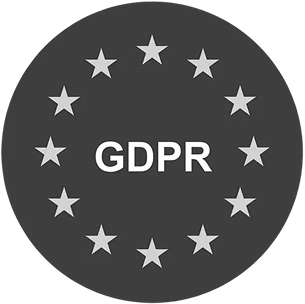Teams launch new features every other week, track endless KPIs, and fill dashboards with hundreds of colorful charts, and yet the question often stays unanswered: why are customers still leaving?
If you're a CX leader, support director, or business founder, chances are you've felt that same frustration. You have all the data in front of you, but still can't tell what's driving customer churn or how to stop it.
That's where predictive analytics for customer retention and churn prevention steps in. In this blog, we break down how predictive analytics for customer retention moves beyond just data to show you who is leaving and, crucially, why, so you can prevent churn by acting on feedback faster.
Also, discover how SentiSum's AI-native VoC platform identifies the exact reasons behind customer frustration and helps you develop a clear plan to salvage customer relationships, providing teams across support, product, and operations with a unified customer view.
How Predictive Analytics Works for Retention?
Predictive analytics in customer service uses data to forecast future outcomes and detect churn risks before they materialize. It works by carefully studying and analyzing historical data to find patterns. This data can include what customers have bought before, how often they visit a website, or what they click on in an app.
For companies and businesses, predictive analytics for customer retention enables informed decisions about which customers need immediate attention by analyzing and understanding their past actions. Metrics like churn prediction and customer lifetime value (CLV) are used to study retention, which is a primary goal of this type of analytics.
Churn Prediction: Your Early Warning System
Churn prediction identifies which customers are becoming less interested and might stop using a product or service soon (think of it like a warning system).
For example, a gaming company might see that a player who used to log in daily has not opened the game in three weeks. The system would flag this player as at risk of leaving.
This is especially critical for subscription-based businesses where retention directly impacts recurring revenue.

Customer Lifetime Value (CLV): Measuring Long-Term Worth
CLV, on the other hand, is a measurement of how valuable a customer is over their entire relationship with the company.
For instance, a customer with a high CLV is someone who is expected to make many purchases for years to come. Knowing this helps a business decide how much effort to spend on retention.
How AI and Machine Learning Power Predictions in 2025
In 2025, the entire predictive analysis process is being powered by machine learning and AI for customer retention. Besides data and patterns, these advanced systems can look at many different factors all at once.
They do not just see that a customer has not logged in; they can also notice if that customer stopped reading the company's newsletter (for instance) or recently had a problem that was not fully resolved.
By connecting all these small dots and historical data, the AI can give a very accurate score for how likely someone is to leave.
Key Metrics for Predictive Analytics in Retention
Now, let's look at other key metrics that give these predictions their power:
1. Net Promoter Score (NPS)
What it does: NPS asks customers one direct question: ‘On a scale of 0 to 10, how likely are you to recommend our company to a friend?’ It groups respondents into Promoters, Passives, and Detractors to gauge overall loyalty.
Predictive power: The retention analytics model watches for a customer's score to drop over time. A loyal fan who suddenly becomes a critic sends a strong signal. This helps you spot customers who are secretly becoming unhappy, offering you the chance to reach out to them with a personal message or special offer to win them back before they decide to leave for good.
2. Customer Satisfaction (CSAT)
What it does: CSAT measures how happy a customer is with a specific interaction, like a support call or a recent purchase. It usually asks, ‘How satisfied were you with your experience?’ with a simple rating scale.
Predictive power: Customer retention predictive analytics tools look for customers who contact support multiple times for the same problem. It understands that a person who can't get a fix will eventually give up. This shifts your focus from a single happy-or-not score to the bigger story of a customer's ongoing struggle. You can then flag them for specialized help to solve their root issue.
3. Customer Effort Score (CES)
What it does: CES measures how easy it was for a customer to get what they needed. It asks questions like, ‘How much effort did you have to put in to solve your problem?’ The goal is to make every interaction simple and frictionless.
Predictive power: The model pays close attention to any high-effort experience, like a complicated return process. It knows that a single difficult task doesn't just affect that one moment. It makes the customer expect future hassles with your brand. By tracking these effort spikes, the model predicts that these customers are more likely to search for a simpler competitor. This makes them a top priority for your retention team.
4. Product Usage Frequency
What it does: This metric tracks how often a customer actively uses your product or service. It’s a direct indicator of how much value they are getting from it.
Predictive power: Models carefully watch the rhythm of customer logins. A major red flag they find is the ‘quiet stop.’ This is a user who doesn't cancel but simply stops logging in. Their account is still active, but they've mentally checked out. By spotting a steady decline or a complete halt in activity, the model identifies these fading users.
5. Feature Adoption Rate (FAR)
What it does: How often a customer uses your product is a direct measure of its value to them. FAR tells you exactly that.
Predictive power: Imagine a user of a photo app who only uses the basic crop tool but never tries the powerful editing filters. They aren't seeing the app's full potential.
The model knows that if customers never find the features that solve their core problems, they won't see your product as essential. This insight helps you guide users to these valuable areas, building their reliance and securing their loyalty.
The Role of SentiSum in Customer Retention
Many businesses know a customer is unhappy only after they have already left.
SentiSum’s AI-native VoC platform changes this by solving the biggest problem in customer retention: not knowing the exact reason why a customer is unhappy. By listening to every touchpoint, support tickets, phone calls, surveys, and social media comments, the platform gives you a complete picture of the customer experience in real time.
Unlike legacy VoC platforms that rely on periodic surveys and retrospective analysis, SentiSum provides real-time insights across every customer touchpoint. And this works because SentiSum is not just consolidating scattered data; it is continuously reading between the lines of all your customer feedback at once.
Through Kyo, SentiSum's AI agent, the platform connects the dots between a negative review, a support call where the customer sounded frustrated, and a low survey score.

Kyo also highlights anomalies, detects churn risks, and suggests next-best actions in real time, accurately pinpointing who needs attention and, most importantly, exactly why they are unhappy.
Here’s how SentiSum, along with Kyo, is turning warnings into saved customer relationships:
- From negative reviews to support tickets: It automatically detects an angry review on Trustpilot or a negative comment on social media and creates a support ticket in Zendesk or Intercom. This lets your team reach out and solve the problem before the customer decides to leave
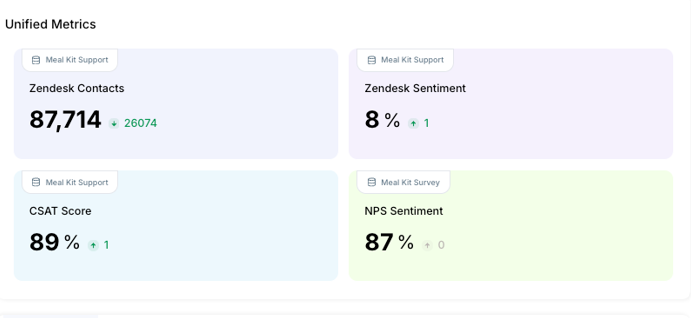
- Guiding agent responses: Kyo suggests the next best action for support agents based on patterns in similar past tickets, helping them resolve complex issues faster and improve the customer's experience immediately
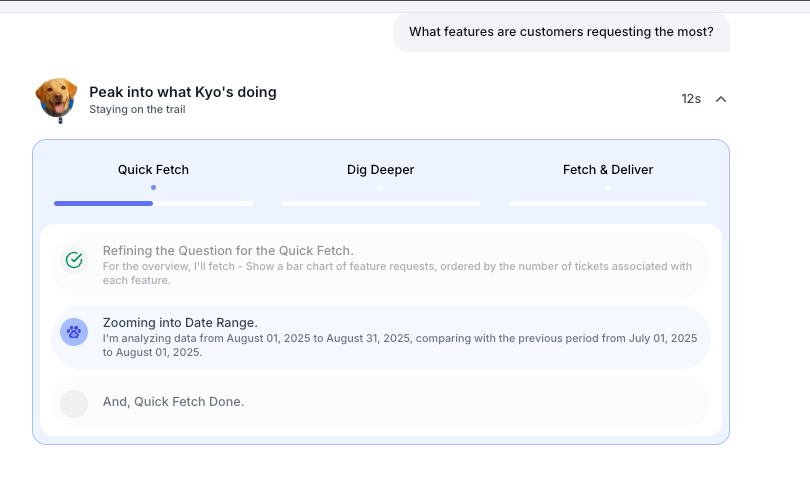
- Predicting churn with voice data: It analyzes 100% of customer phone calls, identifying callers who use frustrated language and show signs of high churn risk, so you can proactively offer them help
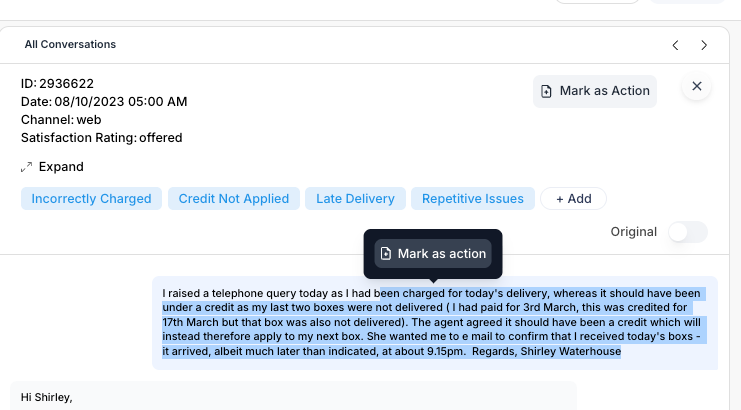
- Connecting feedback to low scores: It links a drop in your CSAT or NPS score to the specific product bug or support issue that caused it, giving you a clear target for improvement
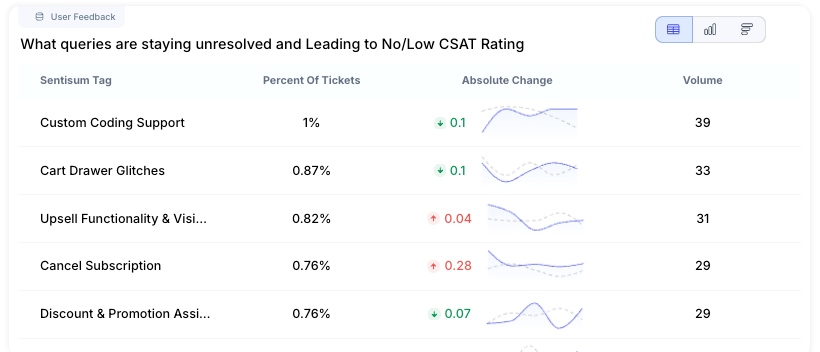
- Spotting new issues early: It's anomaly detection notices brand-new problems as they start to trend, like a sudden spike in comments about a confusing website update, allowing for a fix before it affects thousands of users

To know more, see how SentiSum drives retention with unstructured feedback.
Best Practices for Implementing Predictive Analytics in Retention
Let’s review best practices for moving from simply knowing when a customer might leave to understanding exactly why and having a clear path to prevent it.
1. Start with Unified, Real-Time Data
The foundation of any good prediction is complete and quality data. If your customer information is scattered across separate systems, like support tickets in one platform, surveys in another, and call logs in a third, your analytics will have blind spots.
You might (for instance) know a customer's purchase frequency but miss the fact that they’ve submitted three angry support tickets this month.
True predictive power comes from bringing every voice of the customer together into a single, real-time view. This means unifying data from support interactions, reviews, social media comments, and surveys as they happen, not in weekly or monthly batches.
SentiSum, the AI-native VoC platform, addresses this by integrating with your existing CRM, helpdesk, and social channels and automatically pulling every customer conversation into one place.

This creates a live, holistic feed of customer experience data, ensuring your predictive models are working with the full picture, not just a fragment of it.
2. Focus on the 'Why' Behind the Risk
Many predictive customer retention strategies are good at flagging ‘who’ is likely to churn, but fall short on explaining ‘why.’
Knowing a customer has a 90% churn risk is an alert; understanding it’s because of a specific product bug, a frustrating delivery experience, or poor agent handling is an action plan.
The most effective retention strategies dig into the root causes of dissatisfaction, not just the probability of leaving. This requires moving beyond simple topic tagging to a deeper analysis of customer sentiment and intent.
SentiSum’s AI agent Kyo is built for this deeper understanding. Instead of just assigning broad tags like 'shipping issue,' it identifies nuanced root causes, such as 'repeated late deliveries to the northeast region.'

In other words, Kyo clusters feedback by sentiment and emerging trends, revealing the precise reasons behind frustration. This tells you not just that a customer is unhappy, but what specific problem you need to solve to make them happy again.
3. Build a Proactive, Not Reactive, System
A predictive model is only useful if it leads to immediate action. Knowing a customer is at risk is not enough; your team must be able to act on that knowledge before the customer leaves. This requires your analytics system to connect directly to CRM platforms and tools where your teams already work.
The insight, for instance, must flow into platforms like Slack for instant alerts, Zendesk for creating targeted support tickets, or Jira, so product teams can prioritize bug fixes. This eliminates the need to check a separate dashboard and manually create tasks.
This ensures insights flow across support, product, and lifecycle teams to get a unified view of the customer, preventing silos from delaying critical fixes. SentiSum’s one-click integrations feed real-time, predictive analytics in customer service insights directly into the tools your company uses every day.

For example, when the platform detects a recurring product issue mentioned in support chats, it can automatically post an alert in a dedicated Slack channel. Or, it can create a high-priority ticket in Zendesk for a customer who shows a high churn risk, ensuring they get immediate, specialized help.
This turns a prediction into a prompt, automated action, closing the loop between insight and resolution.
4. Ensure Insights are Accessible to Everyone
The value of predictive analytics is lost if the insights are locked away in a complex dashboard that only data scientists can use.
For retention efforts to be effective, everyone from support agents to product managers needs to be able to access and understand the data. The system should answer their questions in plain language, allowing them to inform their daily work with customer-driven evidence without needing special training.
Whether you're a support leader focused on operational efficiency, a VoC manager building trend narratives, or a CMO connecting retention to revenue, SentiSum delivers insights tailored to your strategic priorities.
The platform is designed with this simplicity in mind. Team members can simply ask questions like 'Why did our NPS drop last week?' and get a direct answer synthesized from all customer feedback.

This democratizes data, empowering every team to make customer-centric decisions quickly and confidently, which is the ultimate goal of a retention-focused strategy.
5. Close the Loop with Your Customers
The final, and often missed, step in retention is telling the customer you’ve listened.
When someone reports a problem or shows signs of frustration, acting on it internally is only half the solution. Following up with that customer and ‘closing the loop’ proves you value their feedback beyond just collecting it, building immense trust and goodwill.
Here too, SentiSum stands out with its ability to track a customer's entire journey. You can see their negative review, connect it to their support ticket, and confirm the problem was resolved. Your team can also proactively reach out via email or a support ticket update to personally inform them of the improvement.
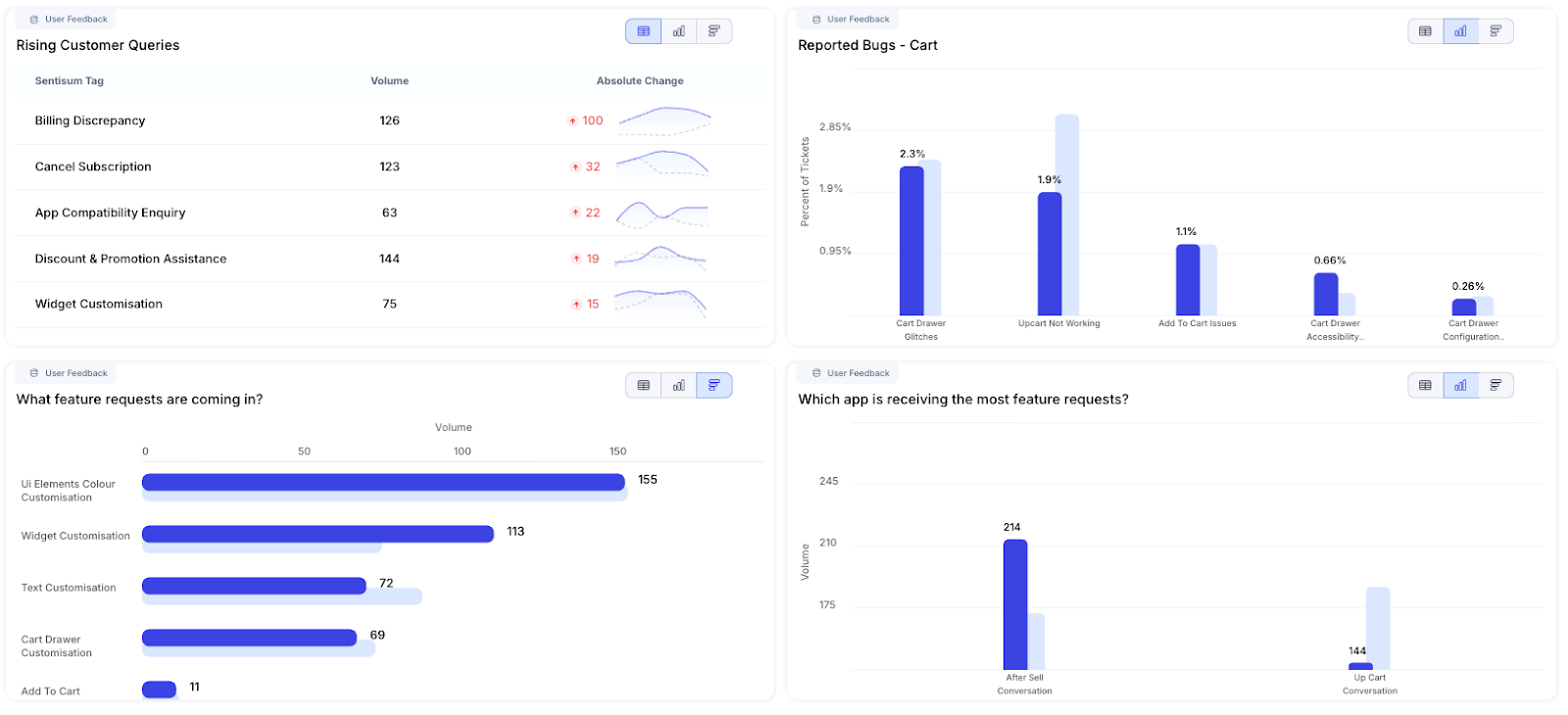
This direct communication makes the customer feel heard and valued, directly countering the feelings that lead to churn and solidifying their decision to stay.
➡️ Watch how SentiSum is revitalizing the broken legacy VoC:
Legacy Voice of the Customer (VoC) is Broken. SentiSum fixed it.
The Smarter Way to Cut Churn: Why Companies Choose SentiSum?
Today, customers switch brands faster than ever. One small delay, an unanswered support ticket, or a poor experience, and they’re gone.
That’s why AI-native predictive analytics has become a must-have for every growth-focused business. It helps you see patterns behind churn, understand what’s driving frustration, and act in time.
Brands must understand that churn isn’t a mystery; it’s an addressable metric when you have the right insights.
And SentiSum is the perfect partner in this regard.
Why? SentiSum is decoding millions of customer conversations in real time and letting businesses understand the real reasoning behind high churn rates. From spotting new issues early to connecting feedback across reviews, calls, and tickets, SentiSum is rewriting how businesses listen, respond, and retain.
Where loyalty is fleeting, understanding your customer deeply is the only real advantage.
Are you aiming for churn prediction using predictive analytics? Book a personalized demo today!
Heading 1
Heading 2
Heading 3
Heading 4
Heading 5
Heading 6
Lorem ipsum dolor sit amet, consectetur adipiscing elit, sed do eiusmod tempor incididunt ut labore et dolore magna aliqua. Ut enim ad minim veniam, quis nostrud exercitation ullamco laboris nisi ut aliquip ex ea commodo consequat. Duis aute irure dolor in reprehenderit in voluptate velit esse cillum dolore eu fugiat nulla pariatur.
Block quote
Ordered list
- Item 1
- Item 2
- Item 3
Unordered list
- Item A
- Item B
- Item C
Bold text
Emphasis
Superscript
Subscript

.webp)
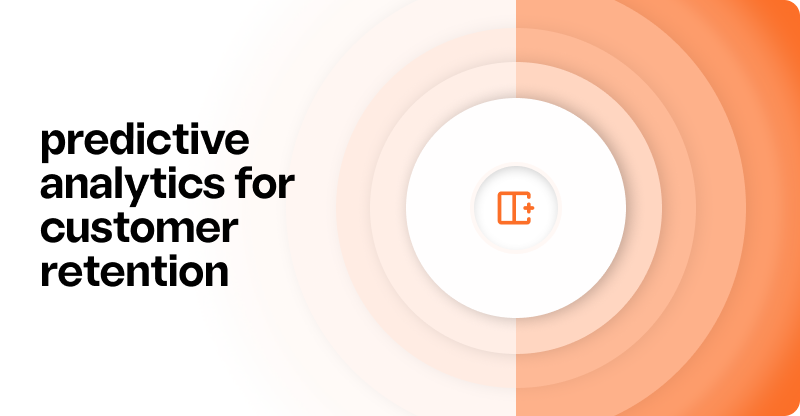





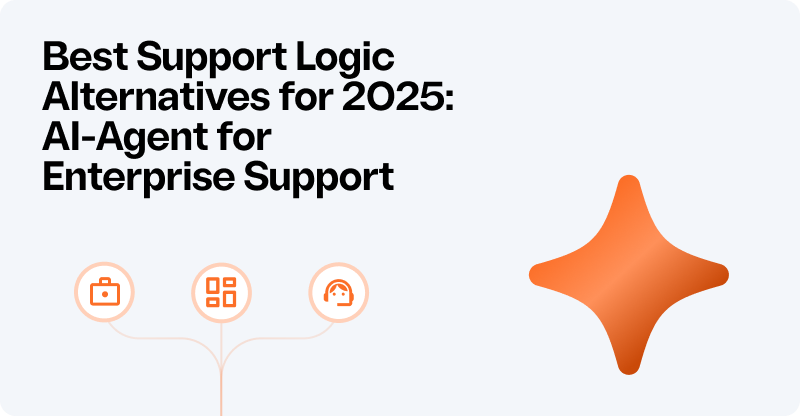
.png)
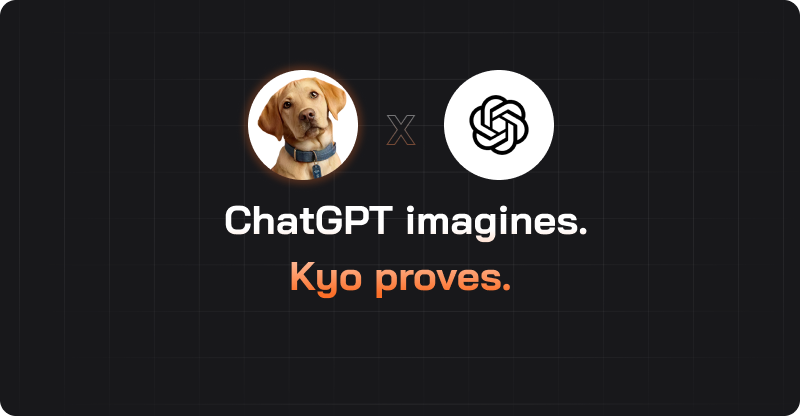
.webp)
.svg)









